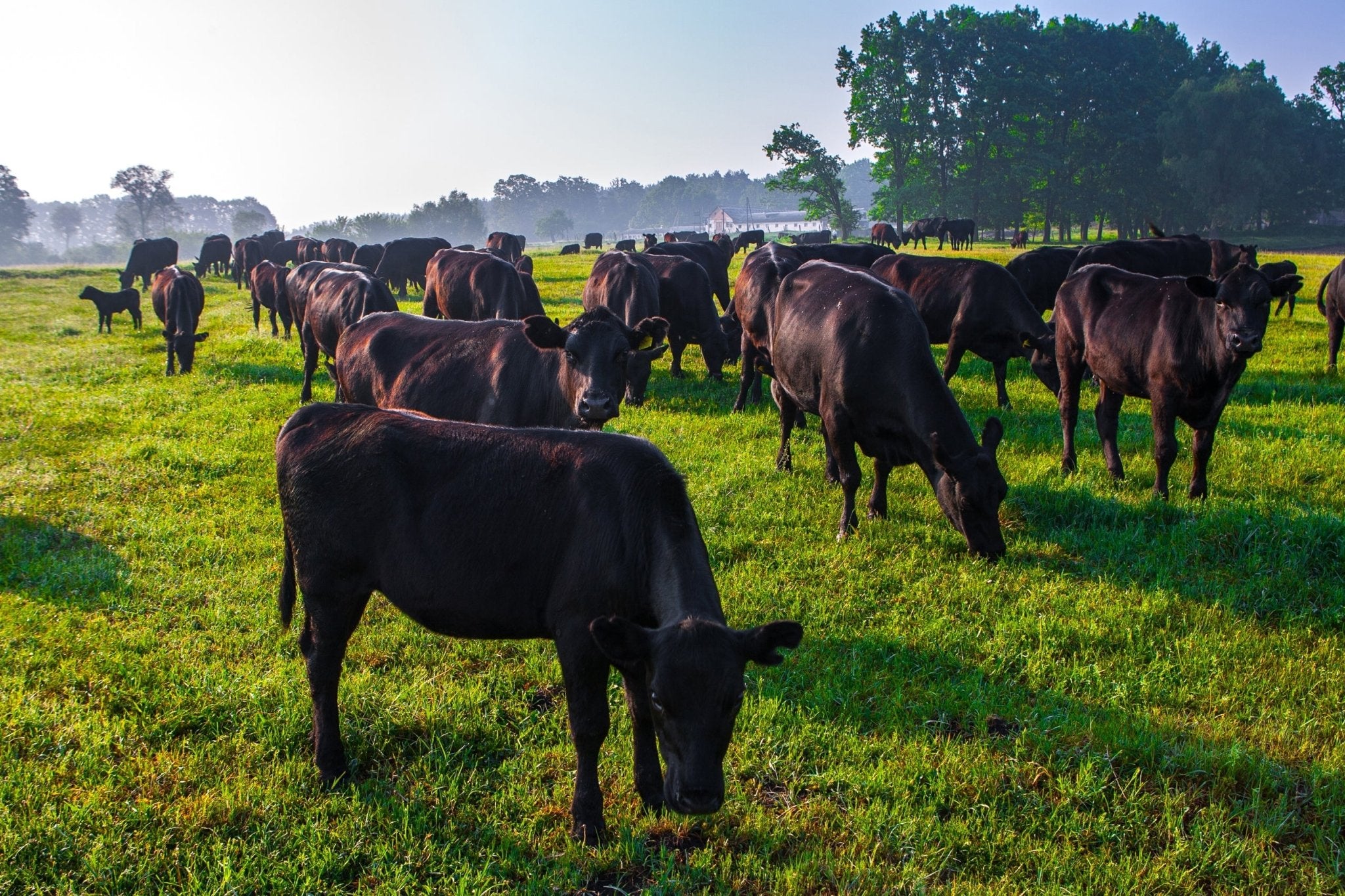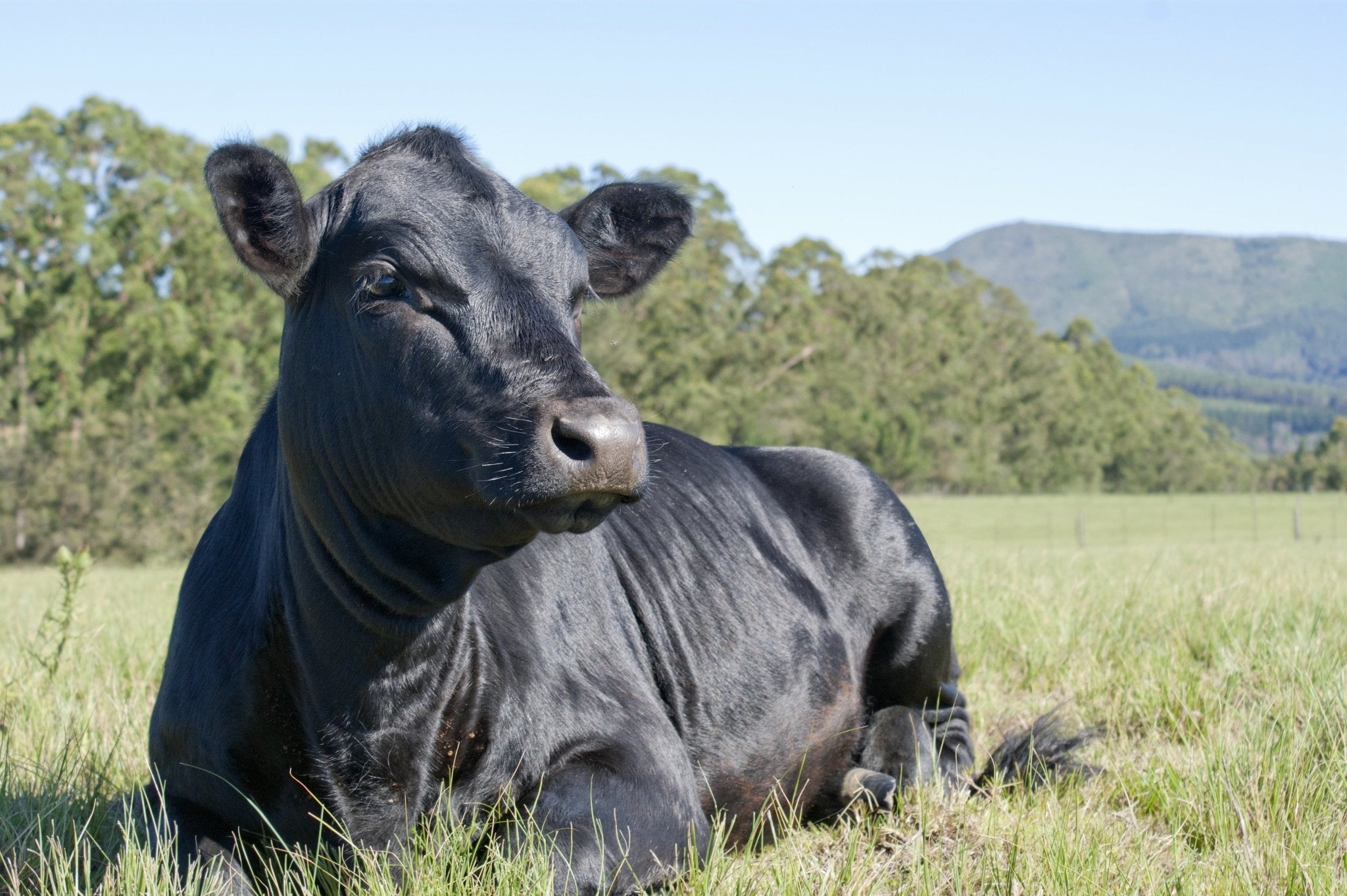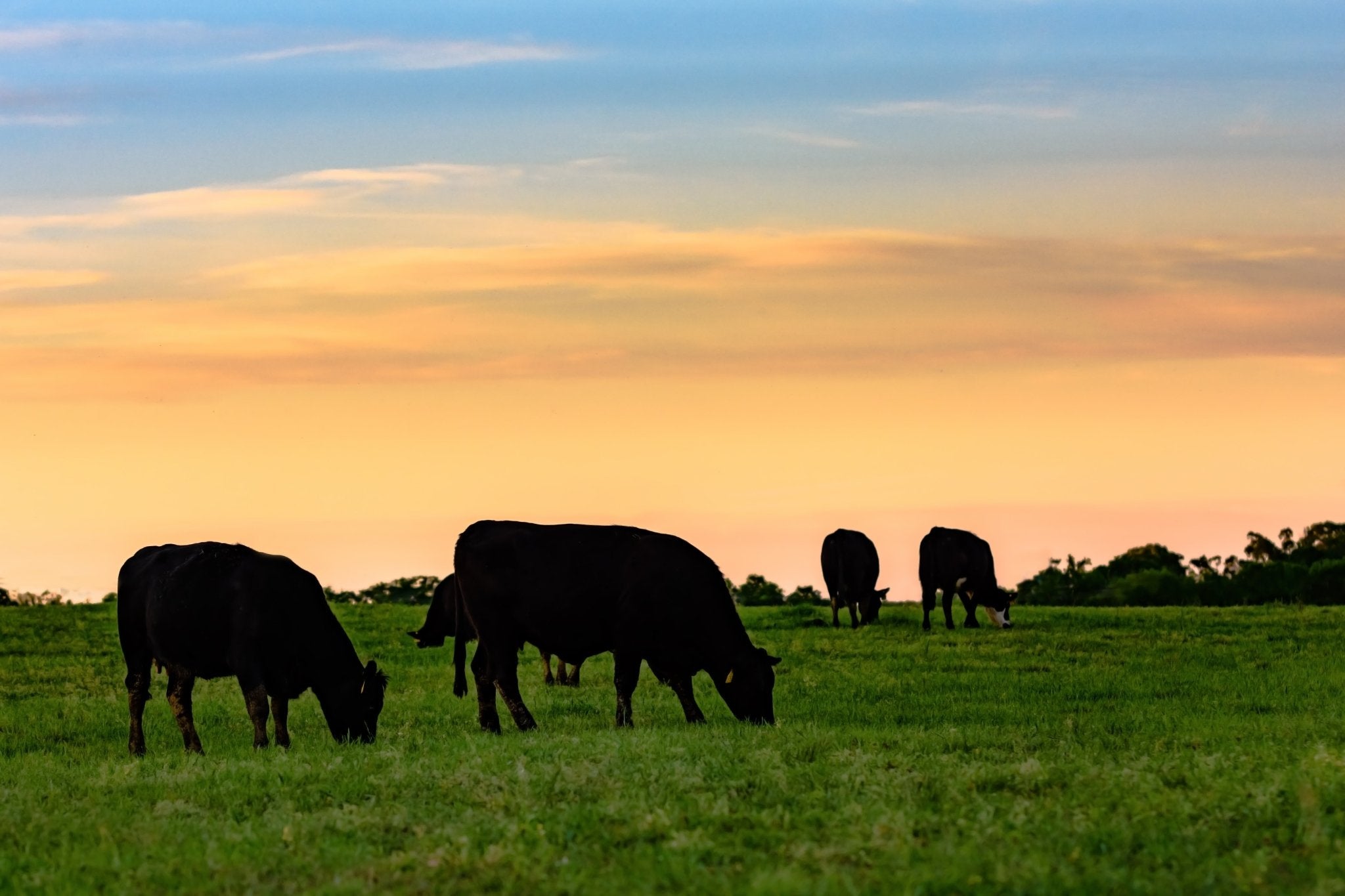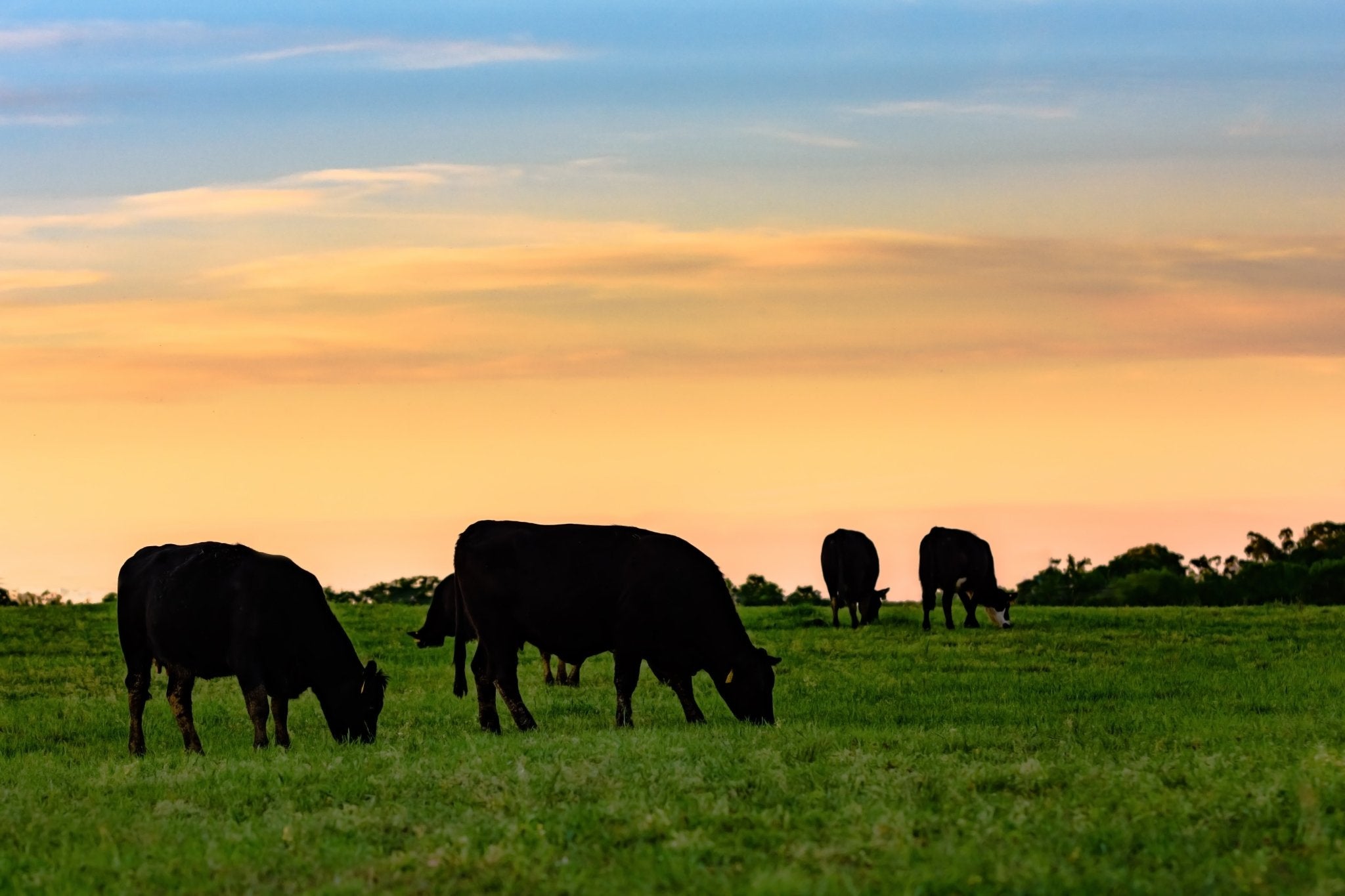Everything You Need Know About Grass-Fed Cattle/Beef and Sustainability

Everything You Need Know About Grass-Fed Cattle/Beef and Sustainability
As awareness of the problems associated with factory farming and industrial agriculture grows, more and more people are looking to shop for sustainable grass-fed beef. The question that seems to be popping up most frequently is, "is buying grass-fed beef good for the environment?" Before answering this question, we need to understand what makes food sustainable, and grass-fed beef is no exception.
Sustainability is about making sure we can meet our needs in the future without compromising what we need in the present. To achieve this goal, different people prioritize different factors such as environmental impact, social responsibility, and economic viability. Because there are many factors involved and everyone has a favorite, it is pretty easy for two people to come up with different answers to the same question if they focus on other priorities.
Is Grass-Fed Cattle/Beef Sustainable?
Grass-fed beef is a form of natural, sustainable agriculture. By definition, a grass-fed cow does not eat anything produced in an industrial facility, and the beef it produces is far healthier for you. The downside to this definition is that it doesn't tell us what the farm looks like or if there are any external inputs other than sunshine and rain.
A sustainable farming system works with nature rather than against it. This means limiting external inputs to the farm, whether chemical-based or not. It also means being efficient so that all of the waste produced on the farm can be recycled back into the ecosystem in a way that benefits it instead of destroying it.
Grass-fed cows are an essential part of this equation because they are part of the cattle/bison family called ruminants. These animals have a four-chambered stomach that allows them to eat feeds, like grass, that humans cannot digest. It also permits the cattle to turn cellulose into protein efficiently in their rumen. At the same time, their digestive system is being fueled by the fats and proteins produced in their body from the grass they eat.
Grass-Fed Cows Improve Soil Quality
For a sustainable farm, soil quality is a critical factor for representing the foundation of any food production system. Grass-fed cows play an essential role in improving soil health for several reasons.
The grass is the natural diet for cattle, so they are designed to eat it and dig through the soil looking for it. Growing plants then creates organic matter that builds up in the topsoil over time, forming a natural barrier against erosion. This activity loosens the earth, aerates the ground, and allows beneficial microbes that convert nutrients into forms plants can use to grow.
The best way to build soil quality is to rotate animals through different pastures that can recover for at least a year before the animals return. This creates optimal conditions for grass growth and helps build organic matter in the soil layer where most of its beneficial organisms live, promoting healthy microbial activity right below your feet!
Grass-Fed Cows Help Maintain Biodiversity
Another benefit of using rotational grazing to raise livestock is that it promotes biodiversity. This is true because the types of plants that grow in different pastures are determined by which kind of soil they are located on, how much water flows through it, and what temperature they will be exposed to during the year.
For example, one pasture might get a lot of direct sunlight, so it will have plants with smaller root systems, while another will get lots of indirect light. This means the plants in the shady area have more extensive access to water and nutrients because more rain passes through that location on its way down the watershed. The animals then help spread these plants across the farm, increasing biodiversity.
Grass-Fed Cows Create Less Pollution
This increased biodiversity also reduces pollution since healthy plants can better absorb nutrient runoff and other pollutants. A study conducted by researchers at Pennsylvania State University (PSU) showed that "saturated soils appear to act as sponges by retaining nutrients that would otherwise be lost to runoff." This means that farms that use rotational grazing reduce pollution downstream and keep the soil on their land healthier.
Grass-Fed Cows Produce More Nutritious Meat
The benefits of grass-fed beef do not stop at the farm gate because animals who eat what they evolved to eat produce more nutritious food for humans. I was a raw vegan for eight years. I returned to eating meat because the research convinced me that humans are omnivores designed to eat both animal and plant proteins. Grass-fed beef is a more sustainable choice for our environment because it requires less energy, produces fewer greenhouse gases, and reduces pollution compared to grain-fed cattle.
What is Beef Cut Sheet and How to Use It?
A beef cut sheet is a helpful guide for figuring out what part of the animal any given steak or roast comes from. It can be a great learning tool for those relatively new to buying and cooking beef. Still, it's also useful for those who want to know which specific muscles they're targeting with their cooking methods.
Butcher beef cut sheet shows what part of the cow each cut comes from and its corresponding weight (in ounces). This is great for those who want to explore different muscles but don't necessarily know the beef anatomy – and also have a scale handy, so they can track their meat consumption.
The side of beef cuts sheet shows the relative percentages of each cut and which portion of the cow they come from. This is useful for large roasts such as a prime rib. Still, it's also convenient when you want to fill your freezer with different cuts without spending hours reading confusing labels at your supermarket.
The beef primal cut diagram shows where each major beef cut comes from on the cow. This type of diagram can be beneficial for explaining beef cuts to your friends and family. Still, it's also nice to have if you want to make sure you're getting an even cut of meat when buying something like a large roast or side of beef.
List of Beef Cuts
Tenderloin: One of the most tender and leanest cuts, which means it cooks very quickly and should be served rare to medium-rare. It can be pan-seared or grilled whole (uncut), but it's also commonly cut into medallions and cooked that way. The most well-known dish involving tenderloin is filet mignon, a French term for "dainty fillet."
Rib-eye: One of the most flavorful cuts due to its marbling and depth of flavor. It has a rich beefy taste and can be grilled or pan-seared with excellent results. The rib-eye cap is the most prized part of the rib-eye roast, commonly referred to as a cowboy steak.
Top Sirloin: The leanest and least tender cut on the cow, but it can be made more tender by cutting into medallions or pounding with a meat mallet. This cut is best when quickly grilled or pan-seared at a high temperature, and it's also a good candidate for beef stroganoff or other slow-cooked dishes.
Flank: A very lean cut with distinct flavor due to its proximity to the cow's diaphragm muscle. It needs to be cooked quickly because it can become tough when overcooked, but this cut is perfect for beef stir-fry or fajitas.
Inside Round: The least tender cut, which means it's best cooked using moist-heat methods like braising. This cut is commonly used for beef pot roast, although you can also buy the steak and slow cook it to break down the connective tissue.
Short Loin: A relatively large muscle group includes T-bone, Porterhouse, and Strip steaks. Also contains the tenderloin muscle on one side, which is the most tender cut of beef. Because this is a lean cut, it can dry out quickly when overcooked, but it's delicious when pan-seared or grilled at high heat for rare to medium-rare cooking.
Brisket: Technically a "forequarter cut," the brisket is a very large and tough muscle that becomes tender when first cooked low-and-slow, but it should only be cooked to medium at best. This cut is commonly used for pastrami, corned beef, pot roast, etc., because those long cooking times help break down the collagen.
Short Plate: Another large, tough cut that generally needs to be braised or stewed for several hours even though it contains a good bit of lean beef and is relatively tender compared to the brisket and flank.
Rib: A smaller section of the cow than the short plate and flank – and hence a more flavorful cut – this section includes the ribs and rib-eye steaks. Because it's so flavorful, this cut doesn't need much in the way of added flavors. It is usually cooked by grilling or pan-searing, although some folks like to smoke ribs when cooking them low-and-slow.
Conclusion
Whether you're shopping for beef cuts at the supermarket or looking to buy a side of beef, understanding these primal cuts will help make your shopping experience much more manageable. With some basic cooking know-how, you can also use any of these beef cuts in your favorite recipes.
The cut of beef diagram show where each significant beef cut comes from on the cow. We hope you find this helpful and interesting! You would use a diagram for education or explaining to someone how the beef cuts connect, where they are on the animal, etc.




Comments